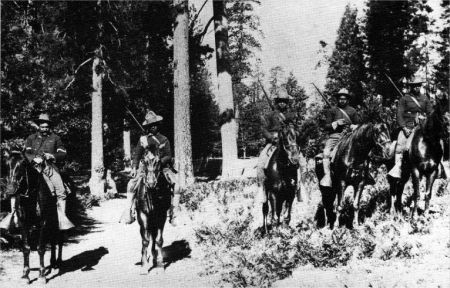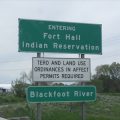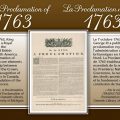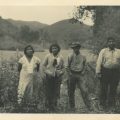
Idaho became a territory during the Civil War: in 1863 President Abraham Lincoln signed the legislation creating Idaho out of portions of Washington and Dakota Territory. Following the Civil War, in 1866, there were a number of conflicts between the aboriginal inhabitants of the territory and the invading Americans. Some of these conflicts are briefly described below.
The Bruneau band of Shoshone signed a treaty in which they gave up their land south of the Snake River in exchange for a promise that the fourteen-mile-long Bruneau Valley would be reserved for them. Forty-one Shoshone leaders, including Always Ready, signed the agreement. However, the treaty was not ratified by the United States.
Gold was discovered about 17 miles west of present-day Salmon. Soon several hundred miners invaded Shoshone country to establish mining claims.
A bounty was placed on Indians. The scalp from a man was worth $100; from a woman $50; and from a child $25. Historian Hank Corless, in his book The Weiser Indians: Shoshoni Peacemakers, reports:
“The hapless Boise and Burneau Shoshoni, now peaceful, were at the mercy of white volunteers and scalp-hunting expeditions who saw every Indian as a threat.”
American troops under the leadership of Captain J.H. Walker attacked a friendly Shoshone camp, killing 18 Indians including six women and children. In response, a letter to the Idaho Statesman said:
“We long to see this vile race exterminated. Every man who kills an Indian is a public benefactor.”
The conflict between the Indians and non-Indians in Idaho escalated. In one instance, an army detachment killed seven Indians. In another confrontation, the Indians surrounded a group of non-Indians who managed to escape. In the Goose Creek Mountains, four Indians who were accused of stealing grain were killed. The Indians captured 300 head of cattle and killed an American. Brigham Madsen, in his book The Northern Shoshoni, writes:
“It was a bloody year, and it left the peaceful Indians afraid to leave camp for their usual hunts and food-gathering activities.”
The Idaho Territorial Legislature chartered the Oneida Wagon Road Company to establish a toll road over the Montana Trail. All travelers over this road paid a toll. With regard to the Shoshone and Bannock, Brigham Madsen reports:
“The Indians received no compensation for the portion of the route which went through their lands.”




Leave a Reply